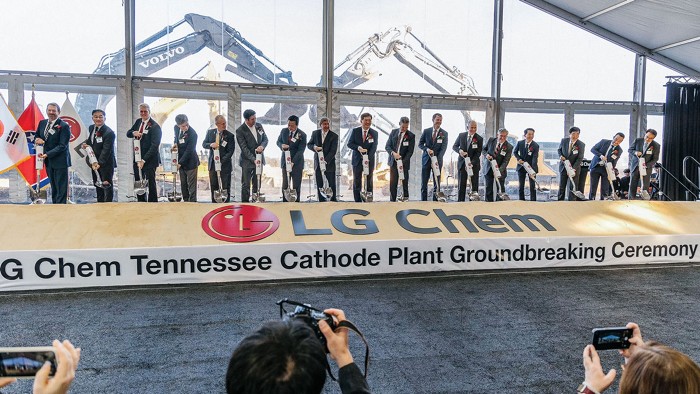Advertisement
Grab your lab coat. Let's get started
Welcome!
Welcome!
Create an account below to get 6 C&EN articles per month, receive newsletters and more - all free.
It seems this is your first time logging in online. Please enter the following information to continue.
As an ACS member you automatically get access to this site. All we need is few more details to create your reading experience.
Not you? Sign in with a different account.
Not you? Sign in with a different account.
ERROR 1
ERROR 1
ERROR 2
ERROR 2
ERROR 2
ERROR 2
ERROR 2
Password and Confirm password must match.
If you have an ACS member number, please enter it here so we can link this account to your membership. (optional)
ERROR 2
ACS values your privacy. By submitting your information, you are gaining access to C&EN and subscribing to our weekly newsletter. We use the information you provide to make your reading experience better, and we will never sell your data to third party members.
Energy Storage
Supramolecular complex liberates lithium
Cation gets a conductivity boost by capturing its counterion
by Bethany Halford
July 21, 2018
| A version of this story appeared in
Volume 96, Issue 30

By sequestering the common lithium counterion PF6– in a supramolecular complex, chemists have found they can enhance the cation’s conductivity and how much current it generates—a finding that could lead to better lithium-ion batteries. MIT’s Jeremiah A. Johnson, Yang Shao-Horn, and Bo Qiao came up with the idea after a talk Qiao gave during his first week as a postdoc at MIT. Qiao spoke about his doctoral work with cyanostar, a macrocycle that forms a supramolecular complex with PF6– in a 2:1 ratio (shown). “LiPF6 is one of the most common salts used as a Li+ source in Li batteries,” Johnson says. The chemists realized that if they could bind the anion of that salt with cyanostar, it could dramatically affect the properties of LiPF6. They reasoned that capturing the counterion would spur the salt to break up into free ions and that the large supramolecular complex would diffuse slowly compared with free Li+. Experiments bore out this hypothesis (J. Am. Chem. Soc. 2018, DOI: 10.1021/jacs.8b05915). The researchers say using cyanostar in batteries is still far off, but they believe that the mechanistic insights they’ve gained could guide the design of practical systems.



Join the conversation
Contact the reporter
Submit a Letter to the Editor for publication
Engage with us on Twitter